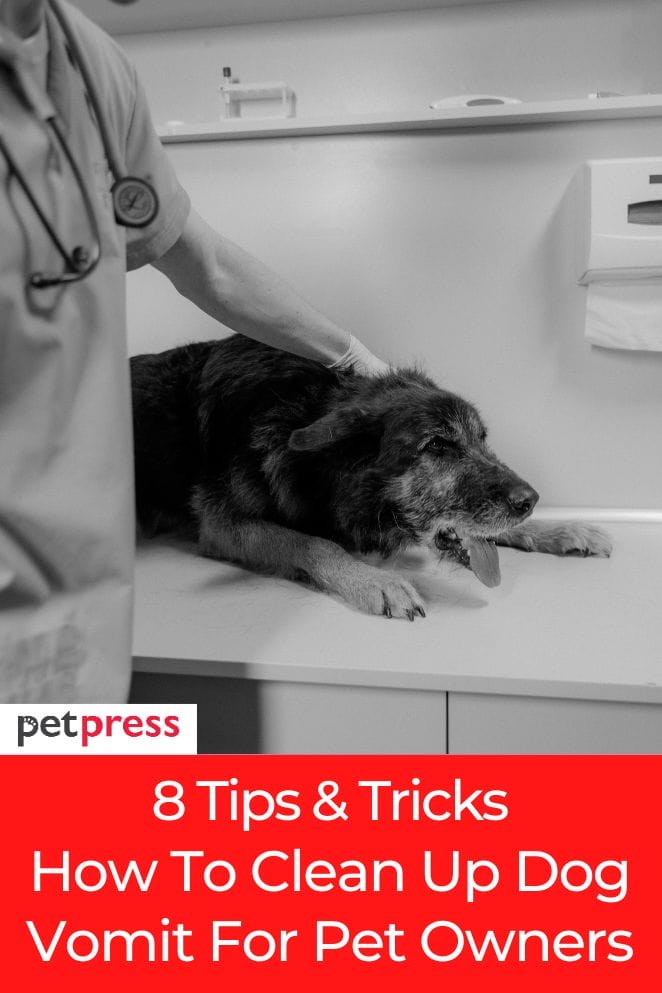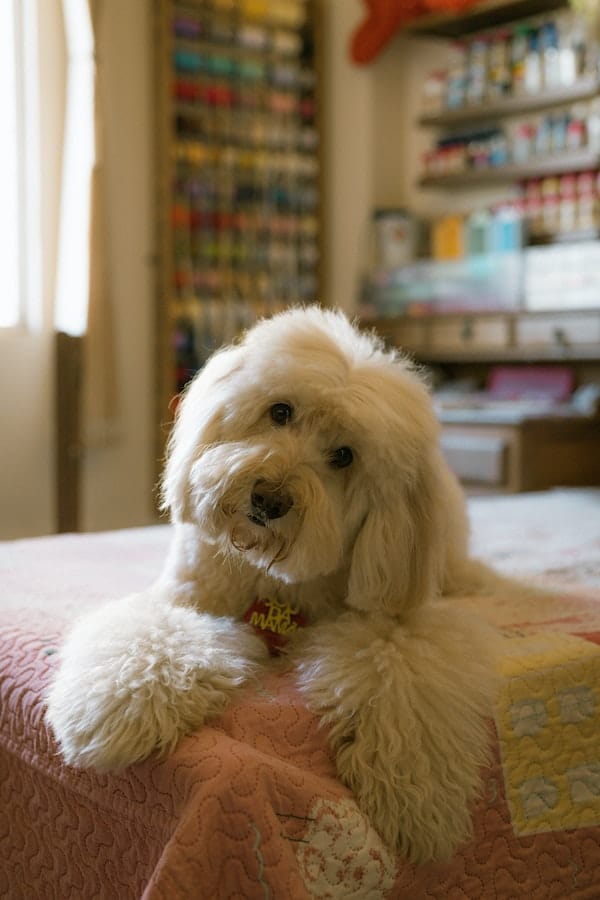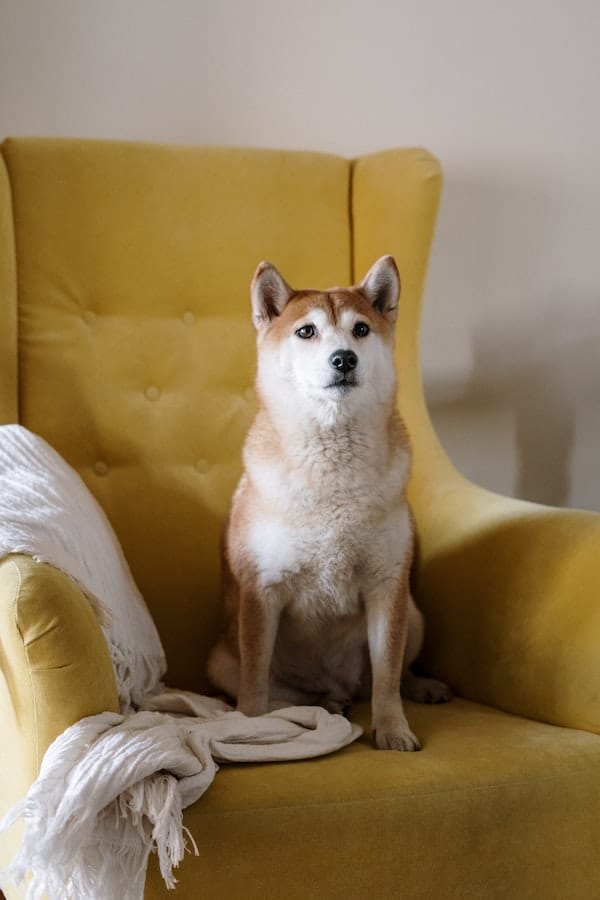
As a pet owner, dealing with dog vomit is an inevitable part of life.
While it’s not the most pleasant task, it’s essential to know how to clean up dog vomit effectively and safely.
In this blog post, we’ll discuss the different types of dog vomit, how to identify them and share some tips and tricks for cleaning up the mess. Let’s dive in!
What are the different types of dog vomit?

Dog vomit can come in various colors and textures, each indicating a different cause or issue. Some common types of dog vomit include:
Yellow or green bile
Yellow or green bile is usually the first type of vomit you will see from your dog.
It is a combination of stomach acids and any food they have recently eaten that has not been digested yet.
This type of vomit typically occurs when a dog eats too quickly, swallows too much air, or eats something their stomach does not agree with.
White foam
White foam vomit is usually caused by excess bile and mucus in the stomach, as well as too much air being swallowed while eating.
This type of vomit often occurs when a dog has an empty stomach or has not been able to digest food properly due to illness or stress.
Brown or dark-colored vomit
Brown or dark-colored vomit is usually the result of stomach acids combined with digested blood.
This type of vomit can be a sign of more serious health issues like gastrointestinal bleeding, liver disease, and ulcers.
If you see brown or dark-colored vomit, it’s important to contact your veterinarian right away.
How to identify dog vomit?

Identifying dog vomit can be tricky, especially if you’re not sure what type of vomit your dog has produced.
Here are some tips to help you identify the various types of vomit and figure out the cause.
To identify dog vomit, look for the following characteristics:
Color
As mentioned above, the color of the vomit can provide clues about the cause. The color of the vomit can be a good indicator of the cause.
Texture
The texture of the vomit can also help you identify what type of vomit it is.
Yellow or green bile usually has a watery consistency, while white foam vomit is usually frothy and foamy.
Brown or dark-colored vomit may have a thicker texture, as it typically contains digested blood.
Odor
The smell of dog vomit can also be an indicator of what type it is.
Yellow or green bile often has a sour, acidic odor, while white foam vomit usually smells like stomach acid and bile.
Brown or dark-colored vomit may have a metallic scent due to the presence of digested blood.
Now that you know how to identify the different types of dog vomit, let’s look at some tips for cleaning up the mess.
Tips for Cleaning Up Dog Vomit

Cleaning up dog vomit can be a tricky task, but there are some things you can do to make it easier. Here are some helpful tips for cleaning up dog vomit:
Act quickly
As soon as you notice your dog has vomited, act quickly to clean it up.
The longer the vomit sits on surfaces, the harder it will be to remove.
Try to mop or scoop up the vomit as soon as possible using paper towels or a dustpan and broom.
Protect yourself
It’s important to protect yourself when cleaning up dog vomit. Wear a face mask and gloves to prevent the spread of germs, and make sure the area is well-ventilated.
Remove solid debris
Before cleaning up the area, make sure to remove any solid pieces of food or other debris from the vomit.
This will help keep your cleaning supplies from becoming contaminated and also make it easier to clean the surface.
Blot the area
Once you have removed any solid pieces, use paper towels to blot up as much of the vomit as possible. This will help absorb any excess moisture and make it easier to clean.
Use an enzyme-based clean-up product
Enzyme-based cleaning products are designed to break down organic materials like vomit and remove odors from the area.
Spray the enzyme cleaner on the affected area and let it sit for a few minutes before wiping it up with a damp cloth.
Rinse and dry the area
Once you have finished cleaning the area, rinse it with warm water to remove any residue. Then, use a clean towel or paper towels to thoroughly dry the area.
This will help prevent the growth of bacteria and mold and keep your house clean and smelling fresh.
Deodorize
If the area still has an unpleasant odor, you can use a pet odor neutralizer to remove any lingering odors.
Follow the instructions on the product and spray it generously on the affected area.
Monitor your dog
If you notice your dog vomiting frequently, it is important to monitor them closely and contact your veterinarian if necessary.
Vomiting can be a sign of an underlying health problem, so it is best to get your pet checked out by a professional as soon as possible.
Conclusion:
Cleaning up dog vomit may not be the most enjoyable task, but it’s essential for maintaining a clean and healthy environment for both you and your pet.
By referencing the dog vomit color chart and following the tips and tricks outlined in this post, you’ll be well-equipped to handle any mess your furry friend may leave behind.
Remember to always consult your veterinarian if you have concerns about your dog’s health or if the vomiting persists.


GIPHY App Key not set. Please check settings